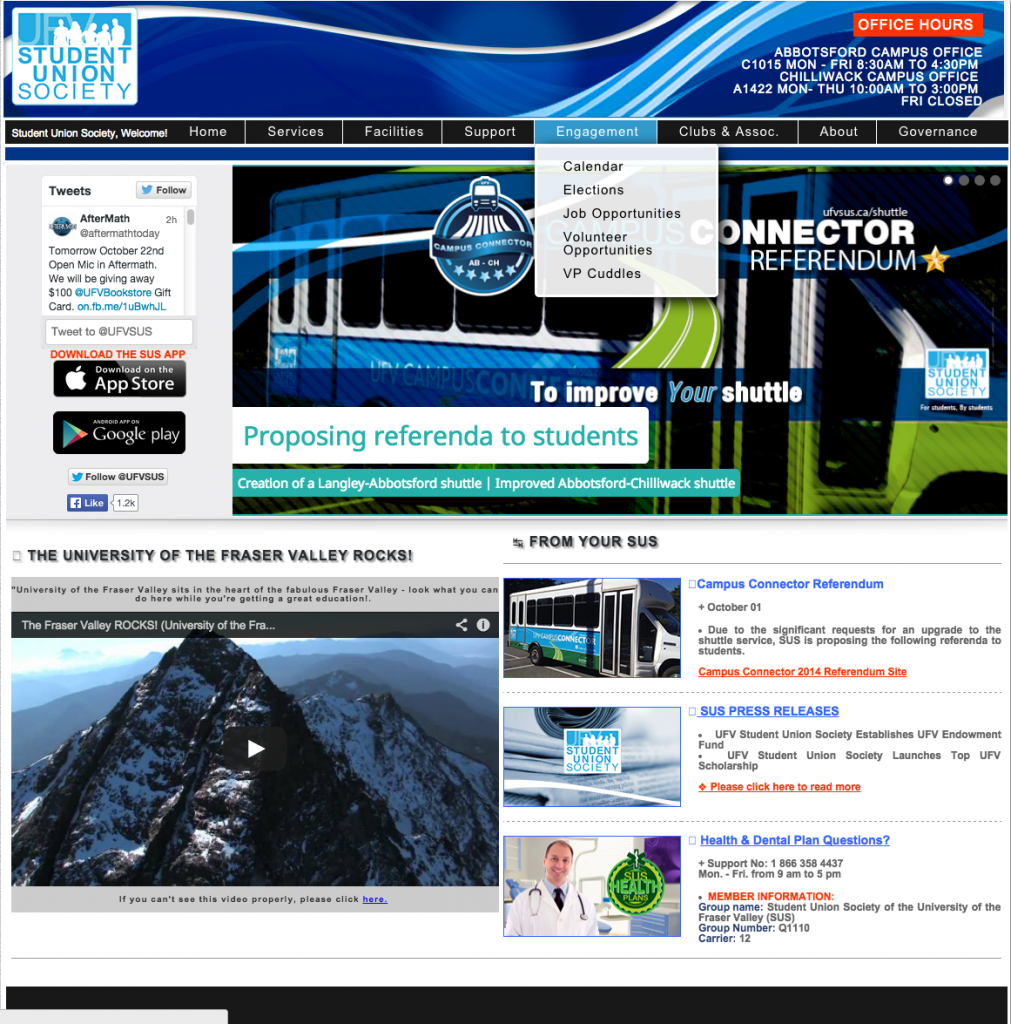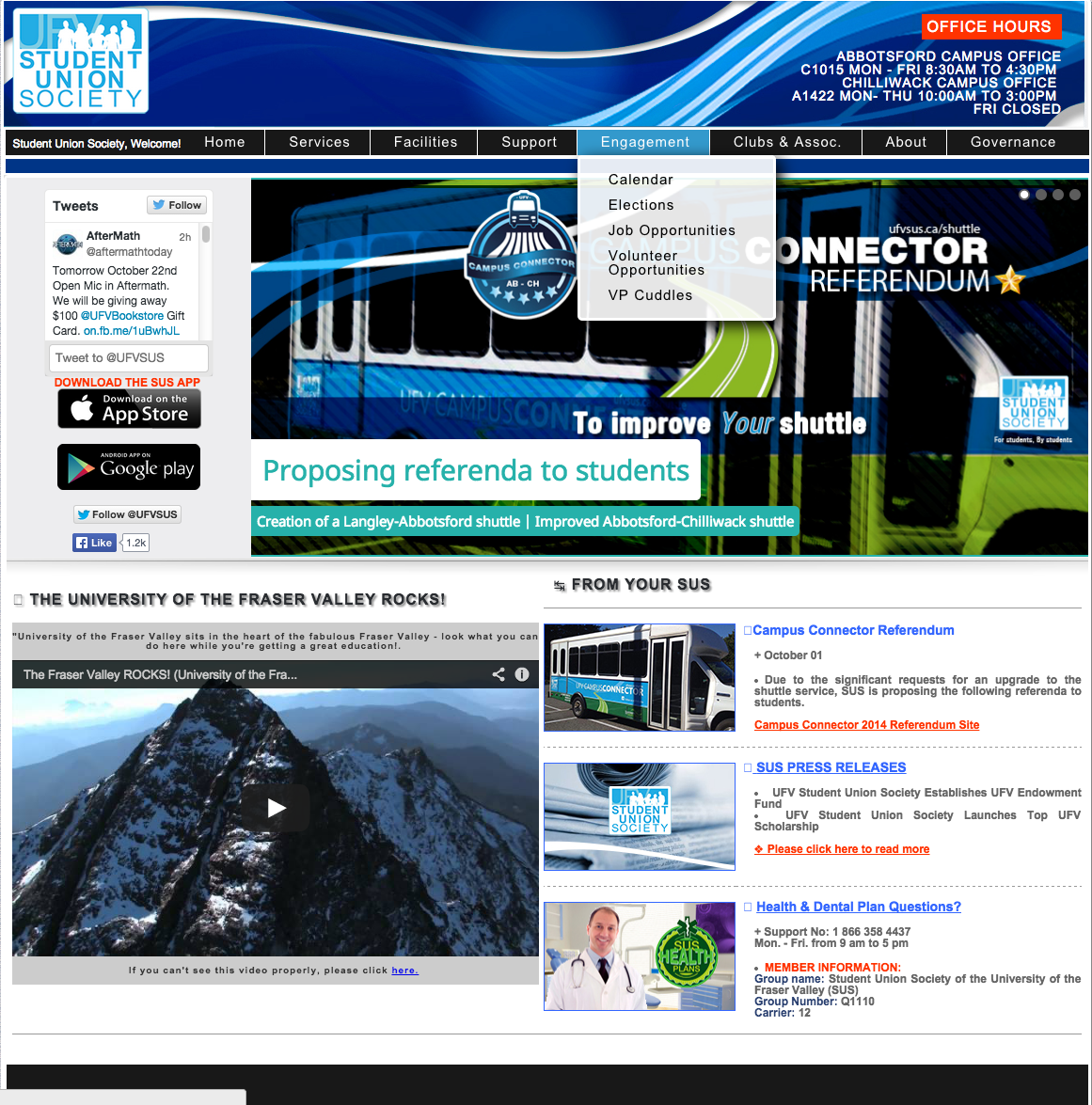By Vanessa Broadbent (The Cascade) – Email
Print Edition: October 22, 2014

For the second time in as many years, the Student Union Society (SUS) has re-designed its website, this time moving from an image-heavy layout to a more conventional design with a slider and info pages.
However, the revamp has also resulted in the removal of all historical information, including archives of board meeting records, referendum information, and news regarding services. SUS president Ryan Petersen says this was unintentional.
“We’re actually putting [some meeting minutes] up today,” he said on October 15.
“It makes it hard for [students] to find information … and we do apologize for that,” he says.
SUS board meeting and general meeting minutes from the past academic year are now online. Information beyond that is said to be available upon request from the VP internal, Thomas Davies.
Petersen says SUS has been looking at student union models at other universities, a number of which have a staff member in charge of media relations. The website and other information-sharing responsibilities would fall under the position.
“We [currently] have one student staff member whose job is to manage our website [Rodrigo Madrigal, SUS’s media and graphic administrator], and that’s a huge responsibility,” he says. “That [type of job] usually [goes] to a media relations portfolio.”
SUS media currently includes its social media accounts (Facebook, which is the most frequently updated of all its online sites, and Twitter) as well as its mobile app. The mobile app, which was introduced as a replacement for the print agendas SUS used to provide to students free of charge, had reportedly been downloaded over 800 times at the beginning of the fall. As the app was not developed internally — it’s the work of a third-party software developer — some students have balked at the app’s request for profile creation, which is then made viewable to other students who share course listings (as opposed to sharing a specific course section). Like other social media companies, the developer lists in its privacy policy that its primary dealings are in user information: “As we develop our business, we may buy or sell assets or business offerings. Customer, email, and visitor information is generally one of the transferred business assets in these types of transactions. We may also transfer such information in the course of corporate divestitures, mergers, or dissolution.”
Aside from basic calendar functionality and direct links to SUS’s Twitter account and notifications, the app features lists of links to campus services and schedules (which omit, among other departments, campus security and residency), and student groups, though only three have been listed on the app. The app’s social feed is mostly textbook-for-sale advertisements. A campus map, sourced from Google data, is lacking in detail and incorrectly tagged.
As a result of SUS not having a designated PR staff, Petersen has taken on all of the society’s communications, even speaking for full-time staff.
A piece of SUS policy amended in March of this year says: “The president is the only person authorized to speak publicly on behalf of the [Student Union Society].”
CIVL Radio station manager Aaron Levy says this is not the best solution.
“If a student comes to me with problems, as a full-time staff member at CIVL, I don’t [redirect their questions], I give them answers to their questions because they’re students and they’re paying me,” he says.
Levy has seen a number of SUS boards since he began work at CIVL in 2010, and doesn’t see elected board members as the best fit for media relations. “The students who are elected are in their roles short-term,” he says. “There’s only so much they know about so many different issues and there’s only so much they can give in terms of background and guidance to students if they weren’t there to work on those issues.”
Petersen is currently filling the role out of a desire for consistency, but admits that this responsibility on top of the other duties of SUS president can be difficult. “It’s incredibly stressful,” he says. “But I am here because [students] have elected me to be here and have given me the task.”
SUS may create a media relations position in the future to help smooth out their current communication situation. Petersen sees this as an important decision for SUS, whose goals in past election campaigns have stressed improved communication with the student body.
“They [would be] there to do fact-checking and remember what’s going on and write up information that is clear, understandable, well-organized, and researched,” he says. “I would really like to have [that].”


